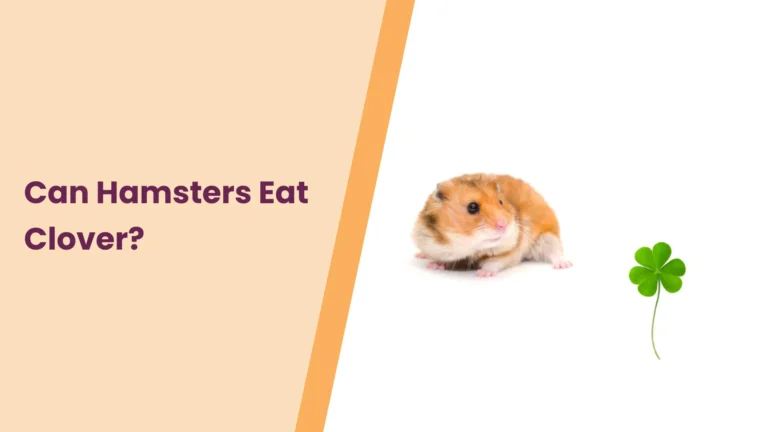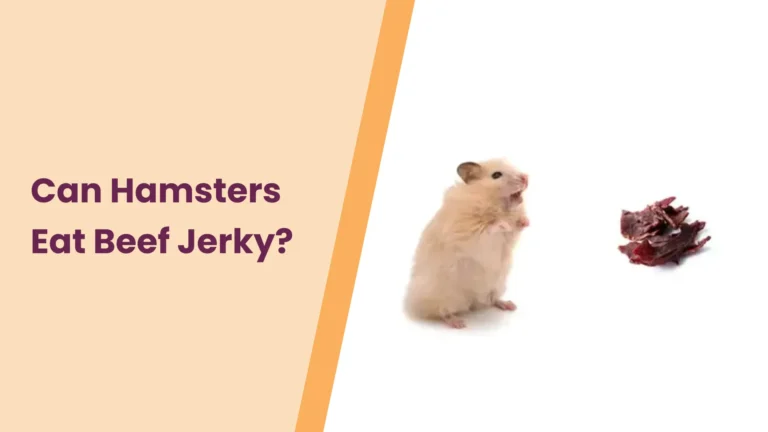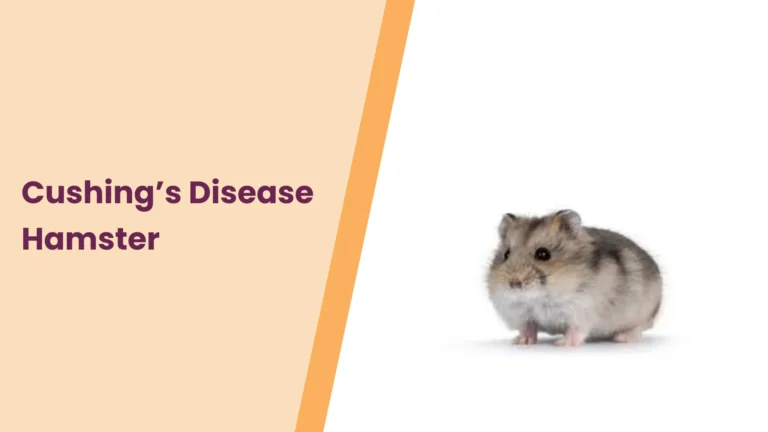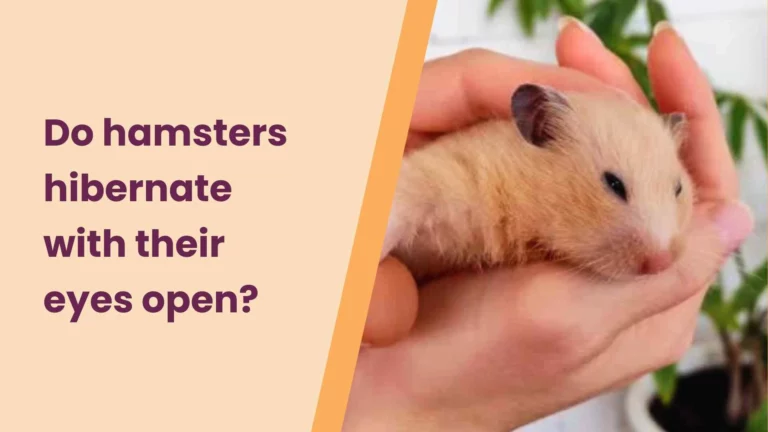Why Is My Hamster Trying to Kill Itself? – All You Need To Know
You’re peering into your hamster’s cozy little world, your heart filled with affection for the tiny, furry bundle of joy. But suddenly, you notice something deeply concerning – your hamster seems to be harming itself. Panic and confusion set in. Why is this lovable pet engaging in behavior that appears self-destructive?
You’re not alone; many hamster owners have been there, questioning their fluffy friend’s well-being. In this blog post, we’ll dive into the perplexing world of hamster behavior, exploring the reasons behind self-harming actions and, most importantly, how you can be your hamster’s hero in times of need.
Let’s unravel the mystery together and ensure your precious pet leads a happy, healthy life.
Understanding Hamster Behavior: Your Furry Friend’s World
Hamsters are small, charming creatures that bring joy and companionship into our lives. To truly care for your little ball of fur, it’s essential to get inside their world and comprehend their natural behaviors. In the wild, hamsters are nocturnal creatures, which means they’re most active during the night. This may explain why your hamster seems to sleep the day away and comes alive when you’re about to catch some shuteye. Understanding this natural rhythm can help you appreciate that your hamster’s quiet behavior during the day is completely normal. They’re just getting their beauty sleep!
Hamsters are also known for their cleanliness. These tiny grooming enthusiasts will often be seen meticulously cleaning themselves, keeping their fur neat and tidy. It’s their way of staying healthy and comfortable. So, if you ever catch your hamster in the act of self-grooming, know that this is a good sign – it means they’re in tip-top shape.
Another intriguing behavior to watch for is their penchant for hoarding. Hamsters are natural foragers, and they love to stash food away in their burrows or hide it in their cheeks. This instinct is hardwired in them, a survival strategy from their wild days. So, don’t be surprised if you find a secret stash of sunflower seeds tucked away in the corner of their habitat.
Recognizing Self-Harming Behavior: Signs That Raise Concern
As a dedicated hamster owner, it’s essential to pay close attention to your pet’s behavior, as they often communicate their needs and feelings through their actions. While hamsters exhibit various natural behaviors, there are signs that may indicate your furry friend is struggling and engaging in self-harming actions.
1. Frequent Scratching or Biting: One of the most apparent signs of self-harming behavior is excessive scratching or biting. Hamsters, like any pet, can experience itchiness, but if this behavior becomes obsessive and leads to hair loss, redness, or wounds, it’s time to take notice.
2. Aggressive Chewing on Cage Bars: Hamsters are curious creatures and enjoy chewing, but incessant and aggressive cage-bar chewing can lead to broken teeth and mouth injuries. This behavior is often a result of frustration or stress.
3. Overgrooming: While grooming is a natural behavior, excessive overgrooming can become a form of self-harm. If you observe your hamster obsessively cleaning itself to the point of bald patches, it’s a red flag.
4. Restlessness and Agitation: Restlessness, pacing, or continuous circling in their habitat can signal distress in hamsters. These behaviors might indicate that your pet is struggling with an uncomfortable environment or stress.
5. Self-Inflicted Wounds: Perhaps the most distressing sign is the presence of self-inflicted wounds, such as sores or cuts on their skin. These wounds may result from aggressive scratching or biting and should be addressed immediately.
6. Changes in Eating or Drinking Habits: If your hamster starts to lose interest in food or water, this can be a sign of stress or underlying health issues. A sudden change in appetite should raise concern.
Recognizing self-harming behavior is the first step in helping your hamster. Be attentive and look for these signs, as they often indicate an underlying problem. In the upcoming sections of this post, we will explore the potential reasons for these behaviors and how to address them with care and compassion.
Possible Reasons for Self-Harming Behavior: Unraveling the Mystery
Discovering that your beloved hamster is engaging in self-harming behavior can be distressing, but it’s crucial to remember that this is your pet’s way of communicating that something is amiss. Let’s delve into the potential causes behind these actions and work towards finding solutions.
1. Stress and Anxiety: Just like humans, hamsters can experience stress and anxiety. Changes in their environment, loud noises, or a lack of social interaction can trigger these emotions. As a result, they might resort to self-harming behaviors as a way to cope.
2. Health Issues: Underlying health problems can lead to self-harm. Dental issues, skin conditions, or internal discomfort may cause your hamster to engage in biting or scratching in an attempt to alleviate their pain.
3. Environmental Factors: The hamster’s living conditions play a significant role in their well-being. An inadequate cage setup, extreme temperatures, or overcrowding can lead to stress and self-destructive behaviors.
Understanding these potential causes allows you to address your hamster’s needs with empathy and precision. In the following sections, we’ll explore each of these factors in detail and provide you with practical steps to alleviate your pet’s suffering.
Stress and Anxiety in Hamsters: Easing Your Furry Friend’s Worries
Imagine if you were suddenly placed in an unfamiliar, noisy, and overcrowded environment, with little social interaction and no escape. It’s safe to say you’d feel stressed and anxious. Similarly, hamsters, in their own way, can experience these emotions. Understanding and addressing their stress and anxiety is pivotal in preventing self-harming behaviors.
Common Stressors:
Environmental Changes: Hamsters are sensitive to alterations in their environment. Whether it’s a new cage arrangement, a noisy household, or an abrupt change in location, these shifts can cause significant stress for your pet.
Lack of Social Interaction: Hamsters are naturally solitary animals, but they still need socialization. Isolation or minimal human interaction can lead to feelings of loneliness and stress.
Loud Noises: Hamsters have sensitive hearing, and loud noises can be incredibly distressing. Be mindful of your pet’s hearing when choosing their habitat’s location.
Signs of Stress and Anxiety:
Excessive Grooming: Stress can manifest in overgrooming, leading to hair loss and irritated skin.
Restlessness: A stressed hamster may exhibit restlessness, pacing, and an inability to settle down.
Aggression: Stress can lead to aggressive behaviors, both towards other hamsters if housed together or even towards themselves through self-harming actions.
Relieving Stress and Anxiety:
Provide a Secure Environment: Ensure your hamster’s cage is a safe and comfortable space. Avoid frequent changes and maintain a quiet, stress-free area.
Regular Handling and Playtime: Spend quality time with your hamster to provide mental stimulation and companionship.
Consistent Routine: Hamsters thrive on routine. Provide a predictable schedule for feeding, cleaning, and playtime.
Quiet Environment: Create a tranquil atmosphere for your pet. Keep their habitat away from loud noises, such as TVs or stereos.
By addressing stress and anxiety, you can help your hamster feel safe and secure, reducing the likelihood of self-harming behavior. In the next sections, we’ll explore additional measures to ensure your beloved pet’s well-being and happiness.
Health Issues: Nurturing Your Hamster’s Well-being
Just like us, hamsters can face health challenges that may lead to self-harming behavior. As a loving hamster owner, it’s essential to recognize these potential issues and seek professional help when needed. Let’s explore some common health concerns and how to address them.
1. Dental Problems: Hamsters have continuously growing teeth. If their teeth aren’t wearing down properly, it can lead to overgrown teeth, which may result in painful mouth ulcers. Your hamster might engage in self-harming behavior, such as excessive chewing or scratching, to cope with the discomfort.
2. Skin Conditions: Skin irritations, allergies, or mites can cause intense itching and discomfort. Hamsters may scratch excessively to alleviate the itching, leading to hair loss and even open sores.
3. Internal Discomfort: Gastrointestinal issues, such as constipation or diarrhea, can make your hamster feel unwell. In response, they may engage in self-harming behaviors as a way to relieve their discomfort.
Handling and Care Techniques: Providing the Best for Your Tiny Companion
Your hamster relies on you for its well-being, and providing proper care is essential to prevent self-harming behaviors. Let’s explore some practical techniques for ensuring your hamster lives a happy and fulfilling life.
1. Appropriate Diet and Nutrition: Hamsters have specific dietary requirements. Offer high-quality hamster food that provides all the essential nutrients. Fresh fruits and vegetables can also be added as occasional treats.
2. Safe Toys and Enrichment: Hamsters are naturally curious and need mental and physical stimulation. Provide a variety of safe toys, such as exercise wheels, tunnels, and chew toys.
3. Regular Cleaning and Maintenance: Keep your hamster’s cage clean by removing waste and soiled bedding. A clean environment prevents odors and the risk of health issues.
4. Handling and Socialization: Hamsters can be timid, but gentle handling and socialization are crucial for their well-being. Start with short, positive interactions and gradually increase the time spent together.
5. Proper Cage Setup: Ensure your hamster’s cage is appropriately sized and well-ventilated. A wire cage with a solid bottom is a good choice.
6. Health Check-Ups: Regular veterinary check-ups are essential to monitor your hamster’s health. Early detection of issues can prevent self-harming behavior caused by underlying health problems.
By following these care techniques, you’ll create a nurturing and enriching environment for your beloved hamster. The key is to provide them with a life filled with comfort, love, and mental stimulation. In the following sections, we’ll explore further steps to ensure your hamster’s happiness and well-being.
Conclusion
In the journey of hamster care, it’s not uncommon to encounter moments of uncertainty and concern, especially when you ask, “Why is my hamster trying to kill itself?” But remember, you’re not alone in this. Your furry friend relies on you for their well-being, and your love and commitment make all the difference.
Throughout this exploration, we’ve delved into the fascinating world of hamster behavior, learned to recognize signs of self-harming behavior, and uncovered potential reasons behind it. By understanding and addressing stress, health issues, and environmental factors, you’re becoming your hamster’s hero.
By providing a safe, clean, and enriching habitat, offering a balanced diet, and nurturing a trusting bond, you’re ensuring a happy, healthy life for your cherished companion. Regular vet check-ups are your safety net, allowing you to detect and address issues promptly.
So, to every hamster owner out there, embrace the role of a loving caregiver, and let empathy guide your actions. Your hamster may be small, but their place in your heart is immeasurable. As you navigate the path of hamster care, know that your commitment is a beacon of love in their tiny world. Together, we’ll ensure your hamster leads a life filled with joy and contentment.
Thank you for being a devoted hamster owner, a hero in your hamster’s eyes. Your journey in hamster care is a rewarding and loving one, and we’re here to support you every step of the way.
“Your hamster’s well-being is your priority, and your experiences can be invaluable to others who share this wonderful journey of hamster care. We’d love to hear from you! Have you faced challenges and found solutions that worked for your beloved hamster? Or perhaps you have questions or insights to share? Feel free to leave your comments, questions, or stories below.
Your contributions may provide comfort and guidance to fellow hamster enthusiasts. Sharing your experiences not only fosters a sense of community but also helps us all learn and grow together. Additionally, if you found this post helpful and think it could benefit others, why not share it on your favorite social media platforms or with friends who also cherish their furry companions? By spreading the word, you’re extending a helping hand to other hamster lovers and, together, we can create happier lives for our beloved pets.” – Hamsterpit







